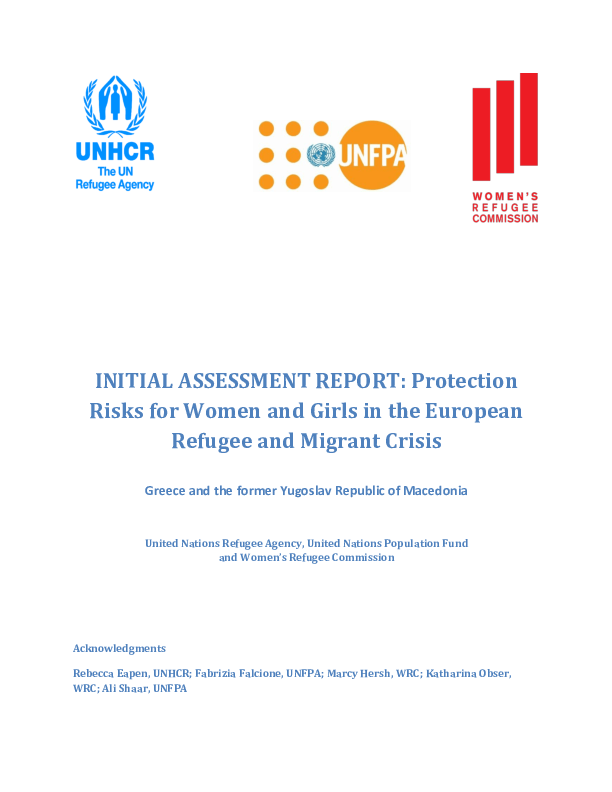
Resources
Protection Risks for Women and Girls in the European Refugee and Migrant Crisis
Resource date: Jan 2016
Publisher: United Nations Refugee Agency, United Nations Population Fund and Women’s Refugee Commission

Resources
Resource date: Jan 2016
Publisher: United Nations Refugee Agency, United Nations Population Fund and Women’s Refugee Commission
For the first time since World War II, Europe is experiencing a massive movement of refugees and migrants, women, girls, men and boys of all ages, fleeing armed conflicts, mass killings, persecution and pervasive sexual and gender-based violence (SGBV). Many seek refuge in Europe from the ongoing armed conflicts that have torn apart their societies, and are entitled to protection under the 1951 Refugee Convention, its subsequent Protocol, and other international instruments. From January to November 2015, Europe witnessed 950,469 refugee and migrant arrivals through the Mediterranean, with Greece receiving the vast majority of arrivals (797,372). Those arriving by sea are fleeing the Syrian Arab Republic (49%), Afghanistan (20%), Iraq (8%), Eritrea (4%), Nigeria (2%), Pakistan (2%), Somalia (2%), Sudan (1%), Gambia (1%) and Mali (1%). The majority travel to Turkey, from where they undertake a treacherous journey by sea to Greece and then make their way through the former Yugoslav Republic of Macedonia, Serbia, Croatia, Slovenia and Austria in an attempt to reach their destination countries, including Germany and Sweden. Each day brings new arrivals, and accurate data remains a challenge. Refugees and migrants are travelling en masse, striving urgently to reach their destination from fear of border closures, potentially increased restrictions in asylum policies and the onset of winter.